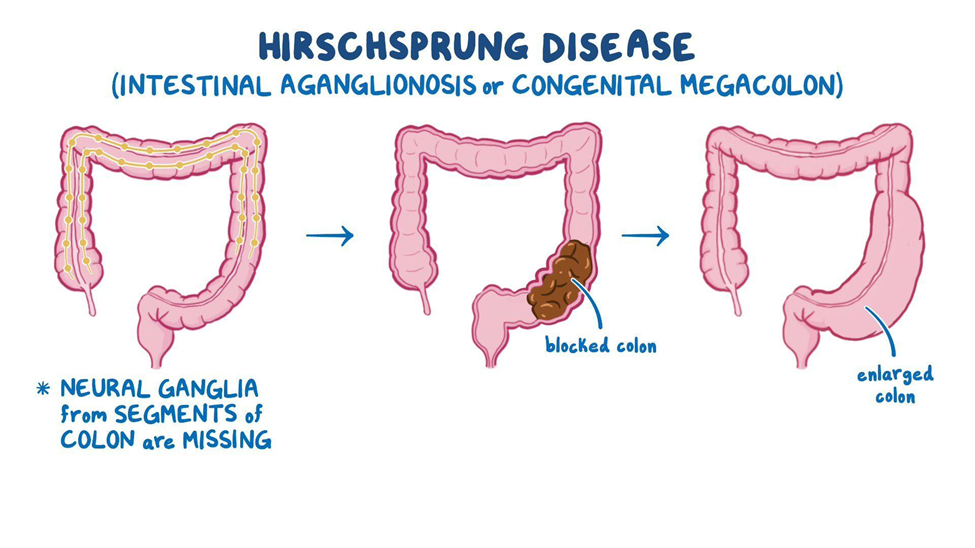The clinic nurse reviews the record of an infant and notes that the primary health care provider (PHCP) has documented a diagnosis of suspected Hirschsprung's disease. The nurse reviews the assessment findings documented in the record, knowing that which sign most likely led the parent to seek health care for the infant?
Diarrhea
Regurgitation of feedings
Projectile vomiting
Foul-smelling ribbon-like stools
The Correct Answer is D
A. Diarrhea
Explanation: Diarrhea is not a typical sign of Hirschsprung's disease. Instead, the condition is associated with constipation due to the obstructed passage of stool.
B. Regurgitation of feedings
Explanation: Regurgitation of feedings is not a characteristic sign of Hirschsprung's disease. It may be seen in other gastrointestinal conditions, but not specifically in this disorder.
C. Projectile vomiting
Explanation: Projectile vomiting is not a typical sign of Hirschsprung's disease. It may be associated with conditions such as pyloric stenosis, but it is not a characteristic feature of Hirschsprung's disease.
D. Foul-smelling ribbon-like stools
Explanation:
Hirschsprung's disease is a congenital condition characterized by the absence of ganglion cells in the rectum and a portion of the colon. The lack of ganglion cells results in functional obstruction, causing stool to accumulate in the affected area. One of the hallmark signs is the presence of foul-smelling, ribbon-like stools, often described as "fecal pellets" or "pellets" due to the obstructed passage of stool.

Nursing Test Bank
Naxlex Comprehensive Predictor Exams
Related Questions
Correct Answer is ["90"]
Explanation
The nurse should withhold the dose if the infant's apical heart rate is less than 90 beats per minute.
Digoxin is a medication that can slow the heart rate. If an infant's heart rate is already too slow, administering digoxin can increase the risk of bradycardia, a serious heart rhythm disturbance.
It's important to monitor the apical heart rate for a full minute before administering digoxin to an infant and to withhold the dose if the heart rate is below the specified threshold.
Correct Answer is B
Explanation
A. Cranberry juice
Explanation: Acidic and citrus juices, including cranberry and orange juice, should be avoided in the immediate postoperative period as they can be irritating to the surgical site and may increase the risk of bleeding.
B. Crushed ice
Explanation:
After a tonsillectomy, it's important to provide cold and clear fluids to soothe the throat and prevent bleeding. Crushed ice is a suitable option as it helps keep the throat cool and provides hydration without irritating the surgical site. Cold liquids can help minimize swelling and provide comfort.
C. Vanilla milkshake
Explanation: While milkshakes may be appealing, dairy products can coat the throat and may not be recommended immediately after surgery. Additionally, it's crucial to avoid using straws, as sucking can increase the risk of bleeding.
D. Orange juice
Explanation: As mentioned earlier, citrus juices like orange juice can be irritating to the surgical site and are not recommended in the early postoperative period after a tonsillectomy. It's essential to choose clear and non-acidic fluids to support healing and prevent complications.
Whether you are a student looking to ace your exams or a practicing nurse seeking to enhance your expertise , our nursing education contents will empower you with the confidence and competence to make a difference in the lives of patients and become a respected leader in the healthcare field.
Visit Naxlex, invest in your future and unlock endless possibilities with our unparalleled nursing education contents today
Report Wrong Answer on the Current Question
Do you disagree with the answer? If yes, what is your expected answer? Explain.
Kindly be descriptive with the issue you are facing.
